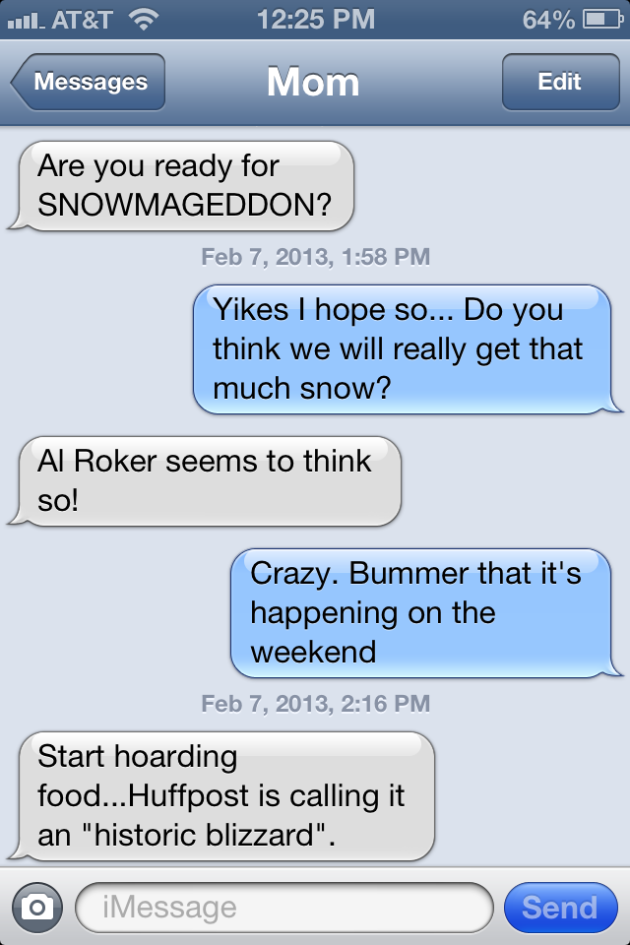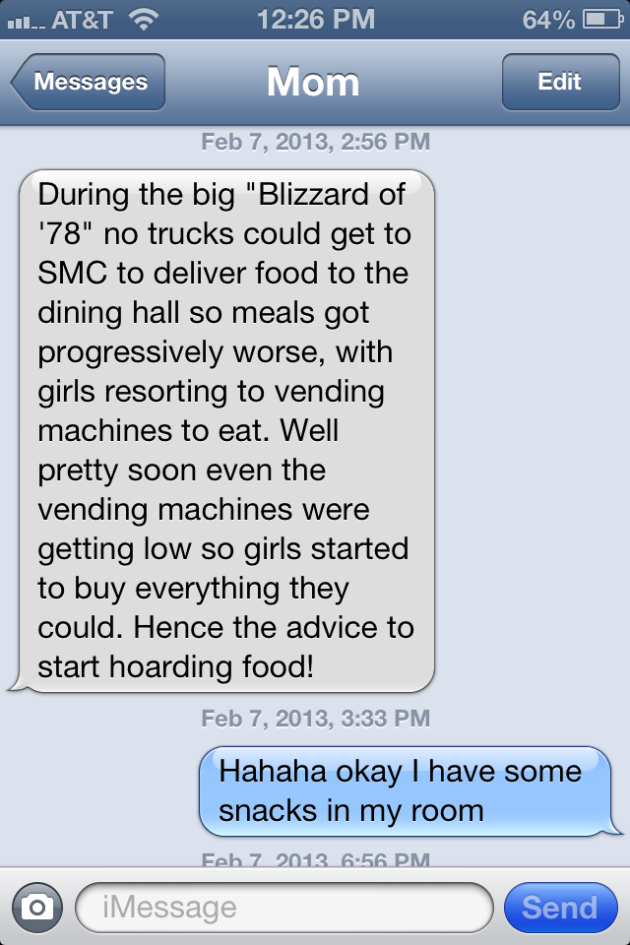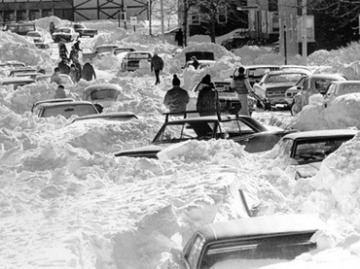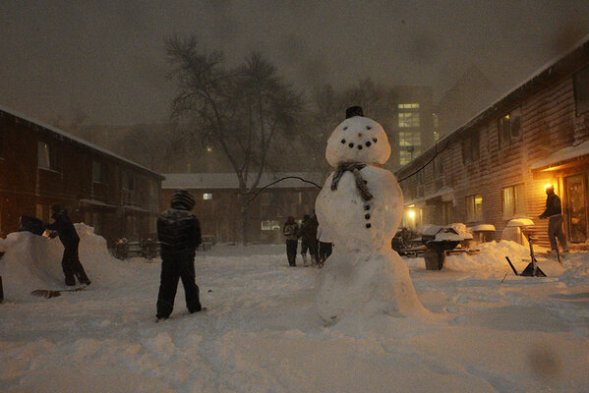As news reports started flooding in about the impending snowstorm, so did texts from my mother:
Excuse her language in this last one:
Sue Pedersen was under the impression that this blizzard would be historic, and she was right. In an article written yesterday on wptv.com, Ben Brumfield and David Ariosto reported:
1 — Person killed due to the storm so far.
3 — NBA teams that had to change travel plans to New York City due to the blizzard.
4 to 5 inches per hour — The rate of snowfall in Connecticut during the blizzard.
6 — The number of states that have declared an emergency.
34 inches — Snowfall in Hamden, Connecticut.
83 mph — Peak wind gust at Cuttyhunk Island, Massachusetts.
103 — Canceled ACT achievement test sites in eight states.
Up to $500 — Fine for driving on the streets in Rhode Island
1,700 — Flights canceled Saturday.
3,612 — Number of snow plows and other equipment in use in Massachusetts.
More than 659,000 — Customers who lost power in nine states.
More than 40 million — People affected by the storm in the U.S. Northeast.
While Nemo’s numbers may not really compare to the truly historic “Blizzard of ’78,” what will truly differ is the way we remember this snowstorm, which will undoubtedly be a result of the evolution of the Internet and social media. Through extensive Google searching, one of the coolest things I found about the Blizzard of ’78 was this interactive timeline. However cool this timeline may be, Nemo will be documented in a way that could not have been predicted by anyone in the 1970s. What images we are familiar with are images that have been digitized and uploaded to the Internet long after the historic event took place.
Nemo will differ in that the vast majority of images generated of the storm will be digital, and available for everyone to see. Via Instagram and Twitter, one can simply search #Nemo and come up with a whole collection of pictures and text from users all over the eastern seaboard, documenting their experience with the blizzard. Everything available on the Internet regarding the Blizzard of ’78 is a relatively recently digitized image or newspaper article or an account written years past the event. We documented Nemo from the first snowflake.
With Twitter’s new searching feature allowing users to see older tweets, we will be able to very efficiently access multimedia from the storm that wasn’t possible in 1978. Wall Street Journal archived some of the best/weirdest Instagram and Vine posts relating to Nemo in one of their blog posts. The storm was given a name, for reasons cited below in this Weather Channel article from the fall of 2012:
1. Naming a storm raises awareness.
2. Attaching a name makes it much easier to follow a weather system’s progress.
3. A storm with a name takes on a personality all its own, which adds to awareness.
4. In today’s social media world, a name makes it much easier to reference in communication.
5. A named storm is easier to remember and refer to in the future.
I paid particular attention to the fourth bulletpoint, which cites the importance of naming the storm in today’s social media world. Not only was it instrumental in archiving multimedia from the storm, but it was also crucial in the dissemination of news from outlets around the northeast. I don’t watch a lot of television, but I do actively refresh my Twitter feed, which is the only way that I knew of the $500 fine for driving in Boston. News spread solely through print, radio, or television, which it probably was in 1978, did not have nearly as much reach as news spread via Twitter using #Nemo.
One of the coolest things I encountered while following the storm via social media was the steady stream of pictures from the Twitter account @heightsphoto of the Boston College campus during the storm. While I was inside writing lab reports, here’s what was going on:
and here’s my favorite:
Check out a full gallery of these pictures here. These pictures inspired my friends and I to take a late-night adventure, but they also are great evidence of the power of social media to compile and spread information. For some, reading about and viewing pictures of the blizzard was just enough to really experience the storm. While I didn’t take any pictures that were nearly as good as those taken by The Heights photographer, my mom did have a point when she told me to take pictures. Nemo was historic, and through social media, anyone’s images could be made iconic because of the facility of their diffusion. This wasn’t the case in 1978, where images that were publicized and made iconic were, for the most part, sourced to a professional photographer who worked for a news team.
I can’t imagine there were many adventures that went un-Instagrammed or un-Tweeted, and SNL made a joke about that last night:






